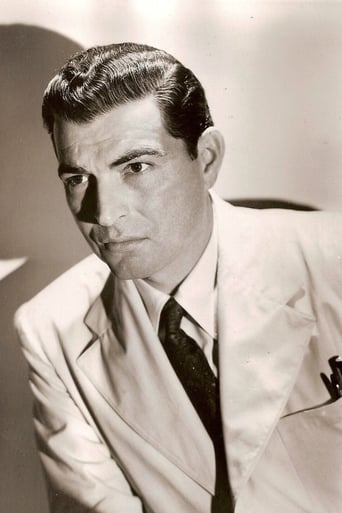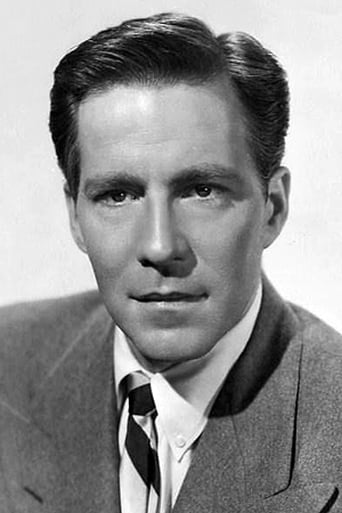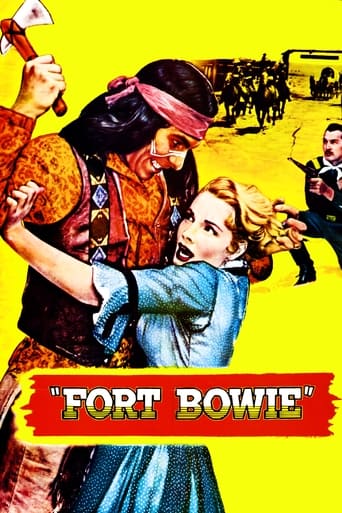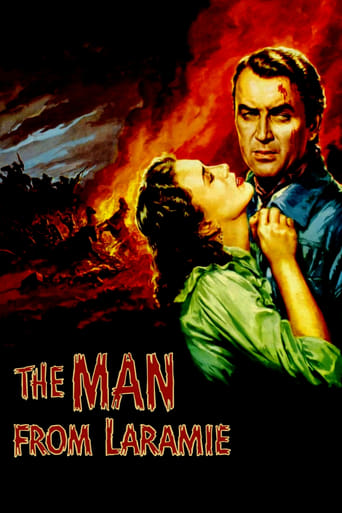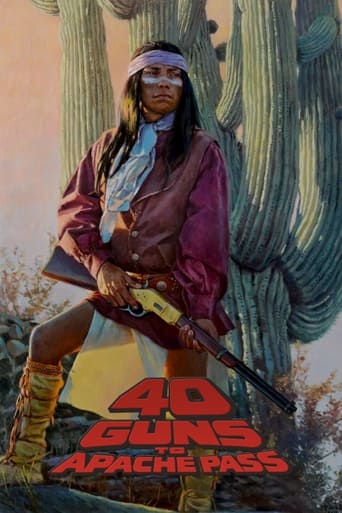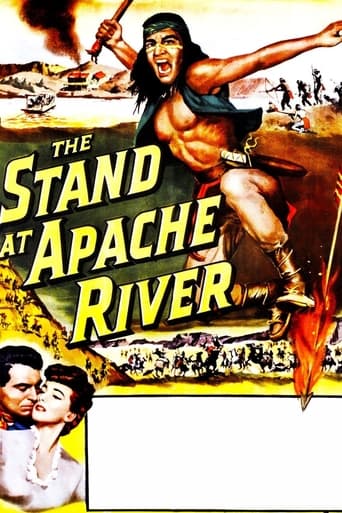

The Stand at Apache River (1953)
Sheriff Lane Dakota captures robbery-murder suspect Greiner just as the latter is wounded in an Apache ambush. At remote outpost Apache River, Lane and his prisoner spend the night with other travelers, including 2 women with a surprising number of fancy dresses. In the morning, who should appear but a band of ostensibly peaceful Apaches strayed from the reservation. And bigoted Colonel Morsby is strongly inclined to shoot first and ask questions afterward...
Watch Trailer
Cast
Similar titles
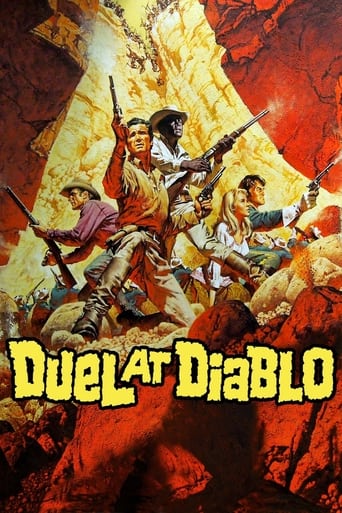
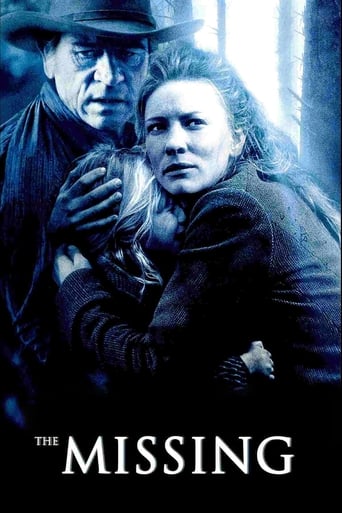
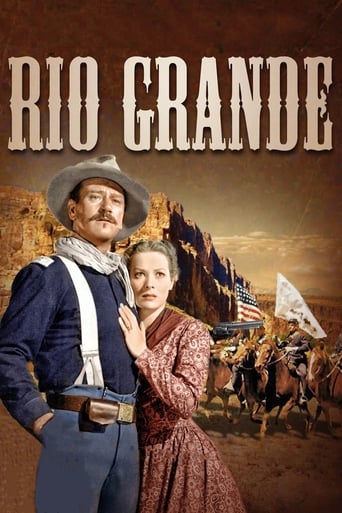
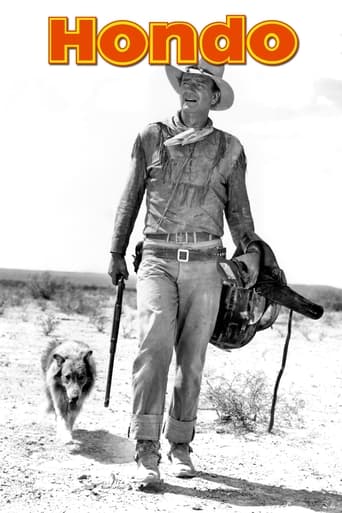

Reviews
You won't be disappointed!
I don't have all the words right now but this film is a work of art.
Absolutely the worst movie.
The plot isn't so bad, but the pace of storytelling is too slow which makes people bored. Certain moments are so obvious and unnecessary for the main plot. I would've fast-forwarded those moments if it was an online streaming. The ending looks like implying a sequel, not sure if this movie will get one
Boy, talk about conflicted women, this story had two of them. Ann Kenyon (Jaclynne Green) laments her position as the caretaker at the Apache River Station, distraught over her husband's long and frequent departures on business, and desperately wants to make a clean get away when a band of Apaches threaten a small group of travelers that just arrived. Valerie Kendrick (Julie Adams) is one of those travelers, on her way to meet her fiancé, but questioning whether she even loves the man enough to make a commitment. It doesn't help that she's pretty much a bleeding heart when lawman Lane Dakota (Stephen McNally) hauls in a wounded outlaw intending to bring him to trial for a hanging. She shares all the classic arguments for the man's possible innocence in the absence of witnesses. Well, she was from back East, so what does she know? This happens an awful lot in old time Westerns but I've never mentioned it before, so this might be a good place to do so. It's not till near the end of the story we find out the sheriff's name is Dakota. So when you pull up the title here on IMDb, one finds out his full name is Lane Dakota. The name 'Lane' was never mentioned in the story, so why bring it up here? It probably appeared that way in the source material and/or screenplay, but it would be a good idea to give the viewer a heads up at some point, don't you think? This story has one of those classic confrontations between a hotheaded, racist military Colonel (Hugh Marlowe) and a more level headed plainsman (McNally) who grew up around Indians and knows the score on what they're intentions might be after being pushed around by the white man all their lives. The Apache band in the story is led by a chief called Cara Blanca, which puzzled me a bit because the translation from Spanish means 'White Face', and that wouldn't seem to be a characteristic of an Apache. I don't know, sometimes I manage to over think these things in stories like this.With Colonel Morsby and Chief Cara Blanca recounting abuses between the soldiers and Indians over a span of time, the stage is set for a showdown at the trail station when both sides refuse to buckle under to the other side's demands. Throughout this ordeal I couldn't help but notice Miss Kendrick's quite fashionable change of attire from scene to scene; I couldn't imagine why she would have preferred to be dressed to the nines at a desert outpost while under potential attack. One thing I haven't seen before occurred when the Apaches fired on the station; a fire arrow entering it neatly pinned the sleeve of Miss Kendrick's dress to the wall in a remarkable feat of accuracy. I'm sure the Apache wasn't even trying.Making a late appearance in the story was an unusually grim looking Hugh O'Brian in the role of Ann Kenyon's husband. Seeing as how she ditched him for two other guys in the story hoping to make her escape, I'd say he had a right to be upset. A couple years shy of his role as Marshal Wyatt Earp in the classic TV series of the mid-Fifties, it occurred to me that between the three principals, McNally, Marlowe and O'Brian, the movie could have been made with any of them in each other's role.
The story opens with a man being chased through a typically rocky western landscape; he hides a pair of saddle bags shortly before being attacked by two previously unseen Indians; he is wounded but kills one; the second is killed by the man chasing him. The man running is Greiner, who is wanted for murder and robbery, and his pursuer is Sheriff Lane Dakota who is determined to see him hang. Dakota puts his wounded prisoner on his horse and they ride to the ferry crossing at Apache River.Once over the river they stay overnight at the station along with the Ann Kenyon, who runs the station, the ferryman, Col. Morsby, a veteran of the wars against the Apache who seems to regret not exterminating them and Valerie Kendrick, a woman on her way to meet her fiancé. They haven't been there long before a band of Apaches turn up; they say they want to trade but they also have understandable grievances about how they have been treated. They say they will depart overnight and return to the reservation but in the morning they are still there and demand that the colonel be handed over to them. This doesn't happen and it isn't long before the station is under attack and there is no way to get help; if they are to survive they will have to fight off the attack themselves as their limited supply of ammunition quickly dwindles.This is a fairly standard B-western with a well won plot; that doesn't stop it being entertaining though and the single location gives it a good claustrophobic feel. The characters are the sort one would expect and it isn't too difficult to guess who is going to make it and who won't, based on how good they are as people. Stephen McNally does a decent job as protagonist Lane Dakota and Julie Adams is a delight as Valerie Kendrick, looking fantastic in a series of stunning dresses... I'm surprised she found time to get changed so often though! While the threat is from the Apaches the real villains are the bigoted colonel who wronged them in the first place; Greiner who is determined to evade justice and Mrs. Kenyon who is determined to get away even if it means abandoning the others. The story is really just something to hang the action on and the action is great; it starts in the opening minutes and after a short lull while we are introduced to the characters and their situation it barely lets up until the end. Over all I'd say this is worth watching if you are a fan of the genre... at less than eighty minutes in length it won't waste that much of your time even if you don't enjoy it too much!
I gave it a 7 rating. It certainly deserved more than the 4.8 user rating given it at this point.I was impressed with the high production values, which could be so high for a B Western because there was mainly just one locale -- a stagecoach way station beside a ferry crossing. I liked the substantial cast of well-known actors, the photography, costumes (especially gorgeous Julia Adams in tight-fitting gowns, yum), music, dialog, etc. The overall story was certainly weak. The fast moving story and all the characters and interrelationships made for an enjoyable movie.There is a lot to say on the negative side. You need a lot of "suspension of disbelief" to tolerate the movie. The whites are surrounded and outnumbered by Indians in the stage depot. Everything is against them. In this dire situation, they are lucky that the Indians just want the Colonel to promise not to pursue the Indians for what some renegade Indians did. But the crazy hateful Colonel thinks Indians are always guilty, and says some people have the burden to prove that they are innocent! He won't make that promise. Eventually the Indian chief says it is enough for the Colonel to accompany the Indians back to the reservation, and then he can leave with no promise about returning or not. But the Colonel refuses, so the one-sided battle begins, but incredibly the good guy and his girl fight/kill the Indians to practically the last man standing.The movie also contained silly soap opera relationships between the characters. The soap opera could have been worse and did add to the interest.
The Stand at Apache River is directed by Lee Sholem and adapted to screenplay by Arthur Ross from the novel Apache Landing written by Robert J. Hogan. It stars Stephen McNally, Julia Adams, Hugh Marlowe, Hugh O'Brian and Jaclynne Greene. Filmed in Technicolor on location at Red Rock Canyon State Park and Victorville in California, film has music by Frank Skinner and cinematography by Charles P. Boyle. Story is about a group of people holed up at a stage coach station trying to not only survive the restless Apache Indians wanting to get in, but to also survive each other.OK, picture treads familiar ground as regards the theme of the U.S. Cavalry's attempt to return Indians to the reservations or else! And anyone who has watched a number of B westerns should be wise enough to know how this one is going to pan out. True enough as well to say that the acting on show is passable at best, even if Adams looks gorgeous and is costumed accordingly, and McNally cuts a decent hero in waiting figure. Yet this is comfortably worthy of time invested on account of the group dynamic that forms the thrust of the narrative. As the group: bigot soldier, outlaw, sheriff, 2 women, stage coach driver, come under pressure, it becomes a battle of wills as the opposites start to clash. The human drama within the depot is tightly scripted, but never overly talky, and the makers are keen to instill some action into the story as well. Which duly comes in the form of long range weapon warfare, escape attempts and the actual Apache attacks. There's also a neat twist development that significantly alters the make up of the mood within the depot. Add in some lovely Red Rock Canyon location photography by Charles Boyle and it's a case of a B western delivering a bit more on its promise. It will not hang around in the memory bank for too long after Frank Skinner's typical Cowboy "N" Indians score has closed the picture out, but it's certainly interesting while it's on. 6.5/10
